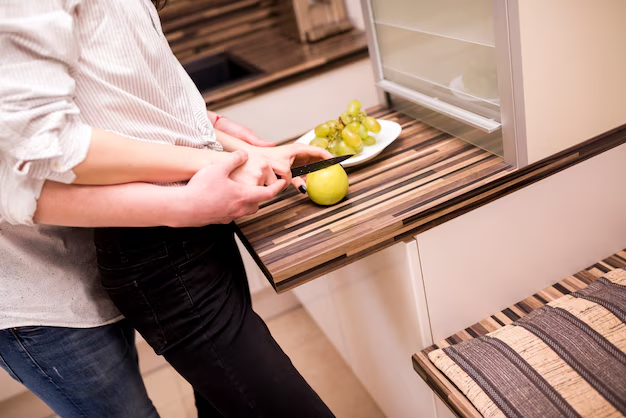Discover Effective Ways to Tackle Mold in Your Refrigerator
Is there anything more unsettling than opening your refrigerator door to find a colony of mold? This common household nuisance not only poses health risks but also affects food quality. If you've ever found yourself staring down this unwelcome guest, rest assured – you're not alone, and there are practical steps you can take to address it. In the following guide, we’ll explore the best methods to clean mold from your refrigerator thoroughly and effectively.
Why Mold Grows in Refrigerators
Understanding the Culprit
Mold thrives in moisture-rich environments, making your refrigerator a potential hotspot if conditions are right. Various factors contribute to this unwanted growth, including spills, expired food, and even high humidity levels inside the fridge. Regular maintenance and careful monitoring can go a long way in keeping mold at bay.
The Impact of Spoiled Food
When food items exceed their shelf life or are not stored properly, they become breeding grounds for mold. It's essential to check expiration dates and practice FIFO (First In, First Out) to prevent moldy situations.
Preparing for the Clean-Up
🧑🔧 Gather Your Supplies
Before embarking on your cleaning mission, ensure that you have the following materials ready:
- Rubber gloves 🧤
- Mask 😷
- Baking soda
- White vinegar
- Soft brush or cloth
- Bucket of warm water
- Sponge
Assembling these cleaning supplies will streamline your process, making it efficient and safe.
Safety First
It’s vital to protect yourself from mold exposure. Wear rubber gloves to prevent skin contact and a mask to avoid inhaling any spores. Remember, your health comes first.
Step-by-Step Cleaning Guide
Step 1: Empty Your Refrigerator
Begin by removing all items from the refrigerator. Check each for mold presence and dispose of anything spoiled. Pay extra attention to leftovers and opened products, as they are prime candidates for mold.
Step 2: Disassemble Removable Parts
Take out shelves, drawers, and any other detachable components. This will not only help clean these parts thoroughly but also make it easier to access every nook and cranny inside the fridge.
Step 3: Create Your Cleaning Solution
In a bucket, mix 2 tablespoons of baking soda with 1 quart of warm water. Baking soda is excellent for cleaning because it’s a natural disinfectant and odor neutralizer.
Step 4: Scrub Moldy Surfaces
Using a soft brush or cloth dipped in the solution, scrub areas where mold is visible. Be gentle to avoid scratching surfaces. For stubborn spots, you might need to repeat this process a few times.
Step 5: Clean Removable Parts
Now, soak the detached shelves and drawers in the same solution. Use the same soft brush for scrubbing off any mold or residue. Thorough rinsing is necessary to ensure no cleaning product remains on these surfaces.
Step 6: Deodorize with Vinegar
Once the primary clean-up is done, it’s time to address any lingering odors. Spray white vinegar onto surfaces and let it sit for about 10 minutes before wiping. Vinegar is a safe and natural solution known for its antibacterial properties.
Step 7: Dry and Reassemble
Dry all surfaces thoroughly with a clean towel or air-dry them, especially in the corners where moisture tends to linger. Reassemble all parts to their respective places inside the fridge.
Step 8: Return Items
Ensure only fresh, uncontaminated items return to the fridge. This step is crucial for preventing mold from resettling.
Maintenance Tips for a Mold-Free Refrigerator
Regular Cleaning Schedule
Commit to clearing out your refrigerator monthly. This involves disposing of expired items and gently wiping down surfaces to remove any developing mold.
Control Your Fridge Climate
Monitor and maintain an appropriate temperature (usually below 40°F or 4°C) to hinder mold growth. Avoid overstocking to permit air circulation and maintain consistent cooling.
Use Baking Soda for Odor Control
Placing an open box of baking soda inside your fridge can absorb unpleasant odors and reduce moisture levels, helping to deter mold growth.
Quick Info: Mold Prevention Hacks
Here is a quick summary of key points to prevent mold in your refrigerator:
- 🤔 Keep a check: Regularly inspect and remove expired or moldy food items.
- 🧊 Monitor temperature: Keep your fridge below 40°F to inhibit mold growth.
- 🧽 Monthly cleaning: Dedicate time every month for a comprehensive clean-up.
- 🍋 Odor control: Utilize baking soda or a lemon slice to maintain freshness.
When to Call Professional Help
Sometimes, despite your best efforts, mold might persist, or harmful black mold could be involved. In such cases, it’s wise to consult professionals who have specialized knowledge and equipment to handle significant infestations safely.
While the notion of scrubbing your refrigerator might not be thrilling, maintaining good hygiene practices can significantly reduce the likelihood of mold return. By implementing a structured cleaning routine and following these preventive measures, you'll promote both a healthier kitchen and peace of mind. Regular vigilance and quick interventions can keep your refrigerator mold-free, ensuring safe and tasty food storage.
